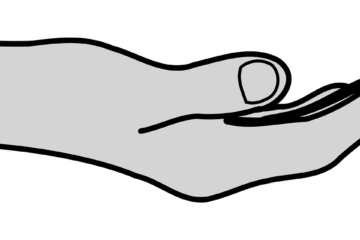An insurance deductible are one of the parts of insurance that get people mad. Myself included. But it is important to understand what they are so that you don’t get a surprise medical bill in the mail. Let me show you.
What is are Insurance Deductibles?
This is the part about how health insurance works that gets most people fired up: deductibles.
Deductibles can be infuriating.
A deductible is the amount of money that you are responsible for paying BEFORE the insurance company steps in and starts paying anything. (This does not include preventative care.)
Preventative care will generally include things like:
- Annual check-up/physical
- Flu shot (and most other vaccinations)
- Mammogram
- Colonoscopy
- Blood pressure screening
- Well-woman visit
- STI screening
- Etc.
Deductible amounts range GREATLY. There are $0 deductibles, there are $20,000 deductibles, and amounts all inbetween. After you have paid your deductible the insurance steps in and pays a portion of the medical bills while you pay the rest.
While insurance plans can vary with what portion the insurance company pays and what portion the individual pays, a very common split is 80% that the hospital pays and you pay 20%. (Remember, this is AFTER you have already paid your deductible.
Here’s how it works:
Maggie has a health insurance plan that has a $4,000 deductible.
She has some health issues that pop up throughout the year and she has to go to the hospital three times.
The first time she goes the bill is $2,000.
The second time that she goes the bill is $1,500.
And the third time that she goes the bill is $500.
Here’s how the payment breakdown would be in this example:
| Amount Owed | Maggie Pays | Insurance Pays | Deductible Remaining | |
| Hospital Visit #1 | $2,000 | $2,000 | $0 | $2,000 |
| Hospital Visit #2 | $1,500 | $1,500 | $0 | $500 |
| Hospital Visit #3 | $500 | $500 | $0 | $0 |
After the third visit to the hospital, Maggie will have exhausted her entire deductible. That means that every dollar (up to the maximum out of pocket that I’ll explain in a later article) will be split between her and her insurance company. With most plans, she will pay 20% while her insurance company will pay 80%.
Let’s say that after Maggie’s third visit to the hospital, she has to go one more time and the bill is $1,000.
It would look like this:
| Amount Owed | Maggie Pays | Insurance Pays | Deductible Remaining | |
| Hospital Visit #4 | $1,000 | $200 | $800 | $0 |
It is also good to note that there is a direct inverse relationship between insurance premiums and deductibles.
Which is to say, the HIGHER the premium that you pay, the LOWER the deductible.
And the LOWER the premium that you pay, the HIGHER the deductible.
Also, your deductible will reset every year. If you have paid your full deductible on December 31st of the year, you will have a whole new deductible starting on January 1st.
One more thing.
An insurance deductible is not used for life insurance. It is typically used in health, dental, and (maybe) vision insurance.
Final Thoughts
Can you see why deductibles make insurance infuriating?
You have to pay your premiums every month. Then you have to pay a copay to visit the doctor. Then you have to pay a certain amount of money before the insurance company will start paying. After that you get to share in the costs of your healthcare until you reach your max out of pocket. And THEN the insurance company will pick up the tab. At least for that year. It starts all over again the following year. Ugh.
It sucks. But unfortunately it is the system that we have in the US. You might as well know how it works.
You can do this!
I am here for you!
Until next time!



0 Comments